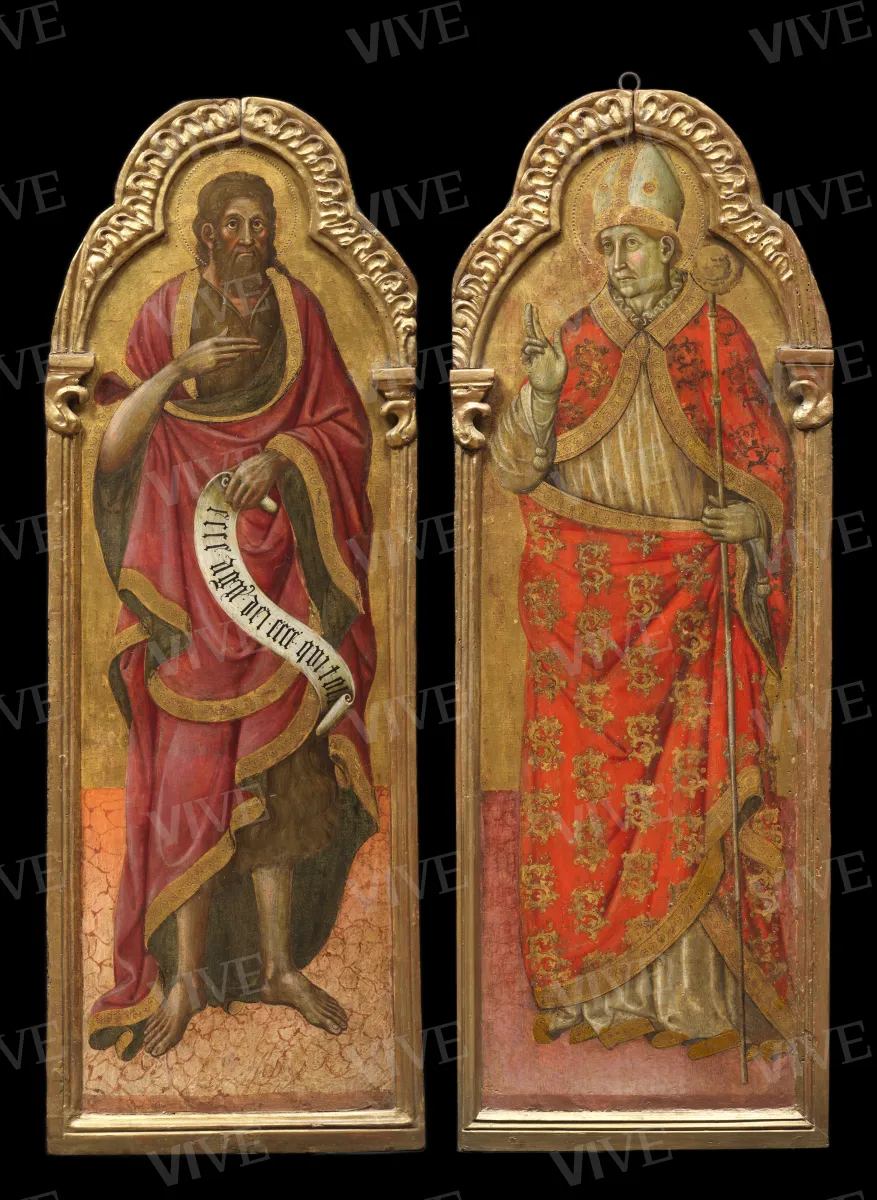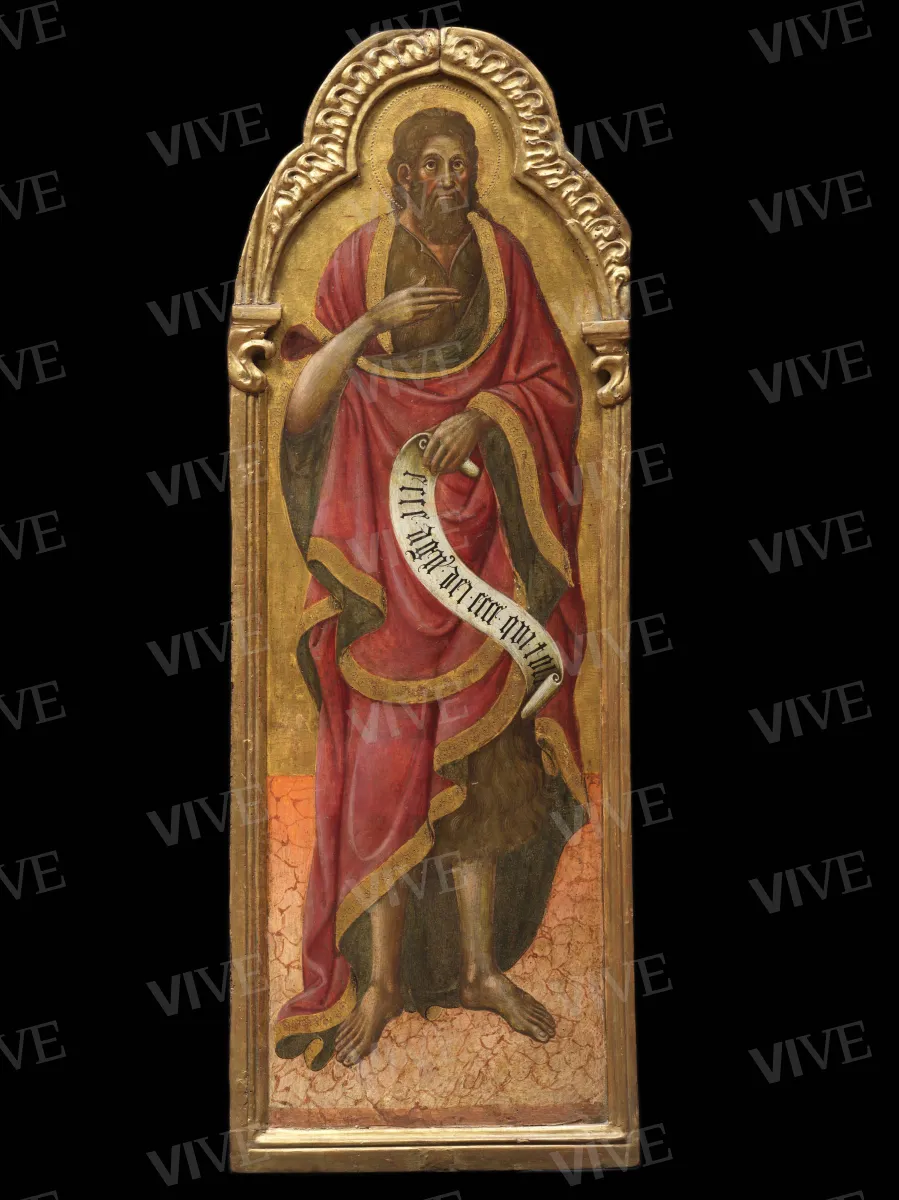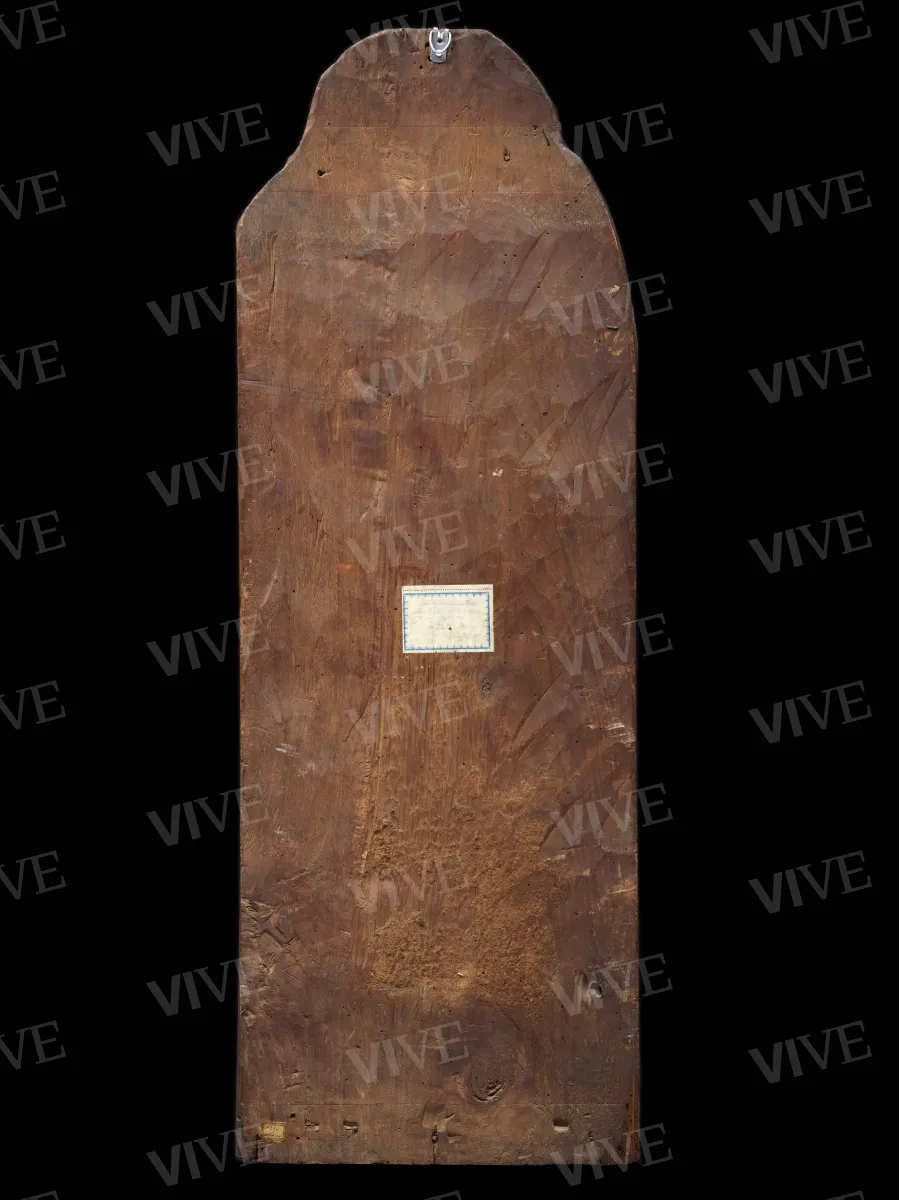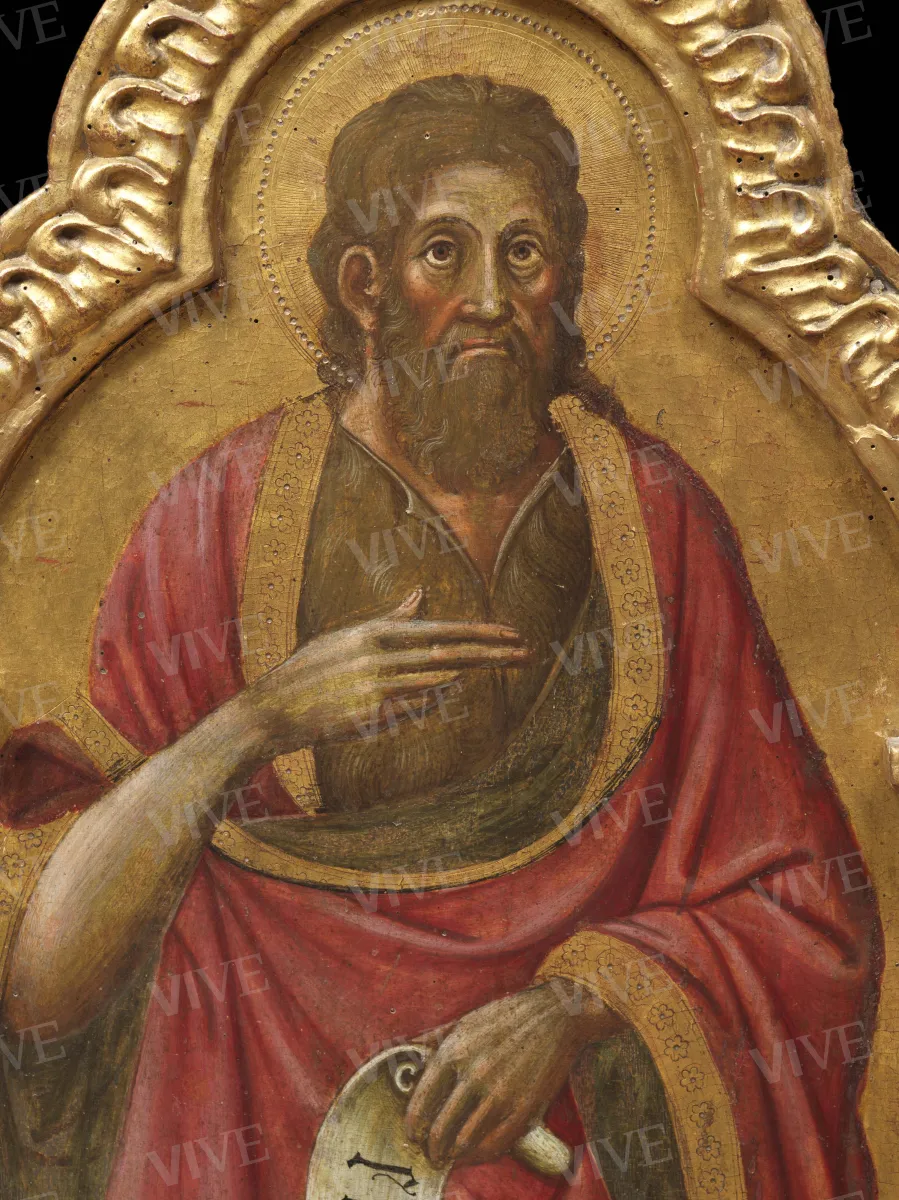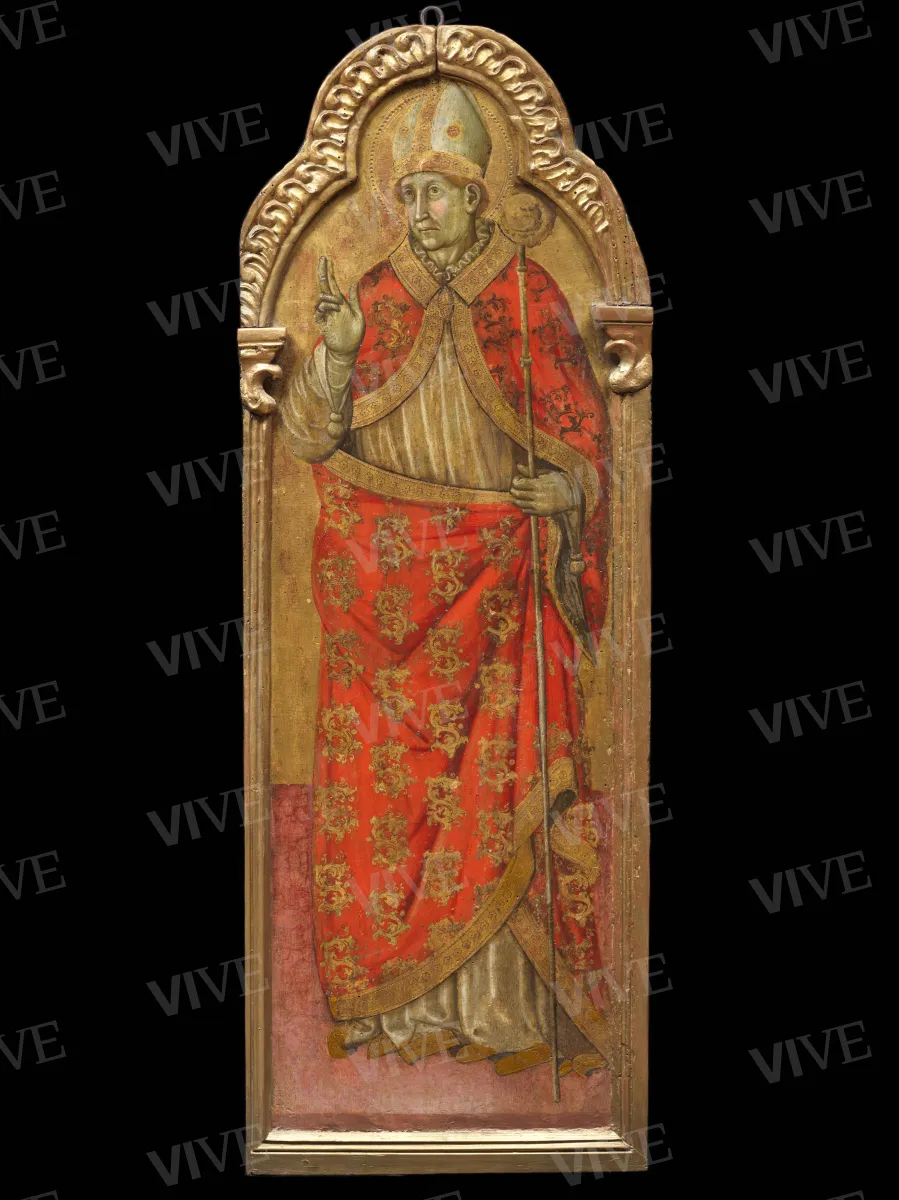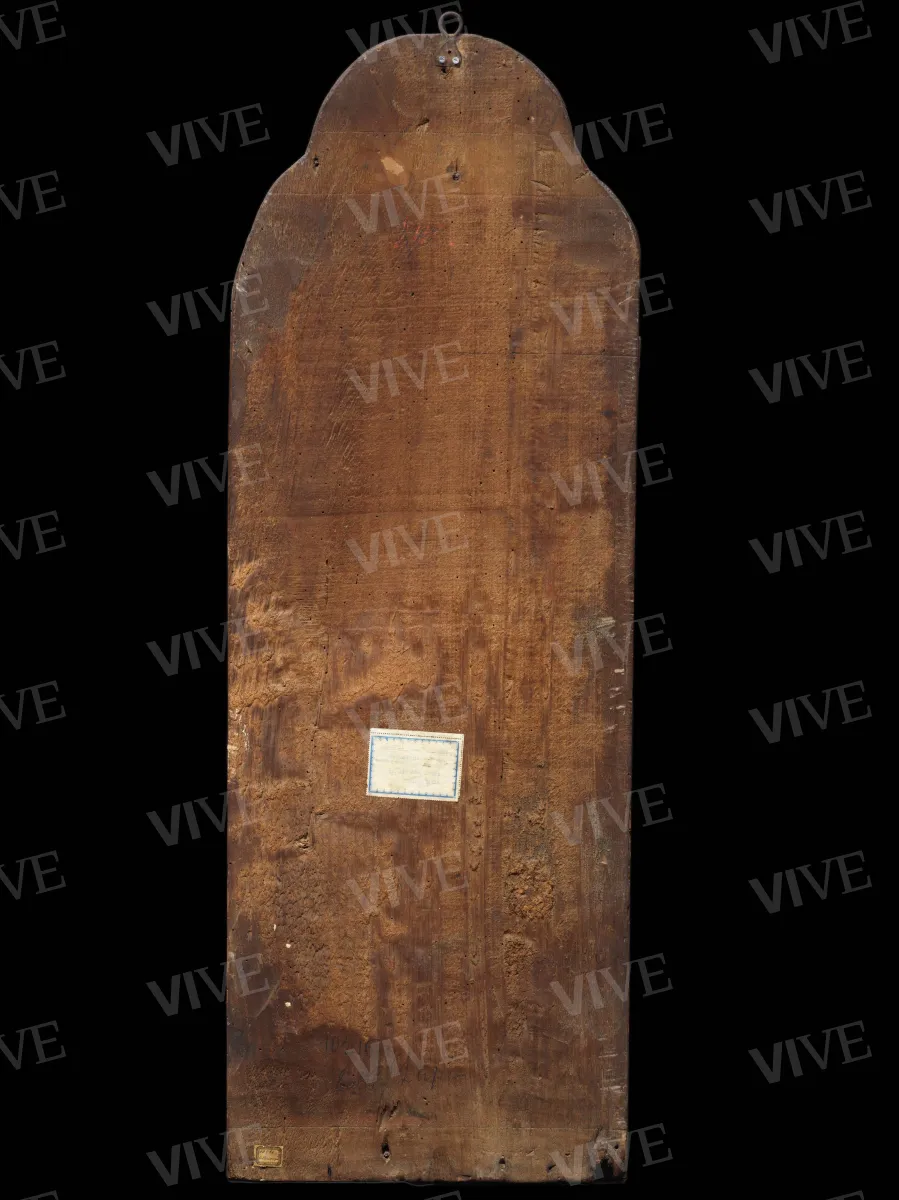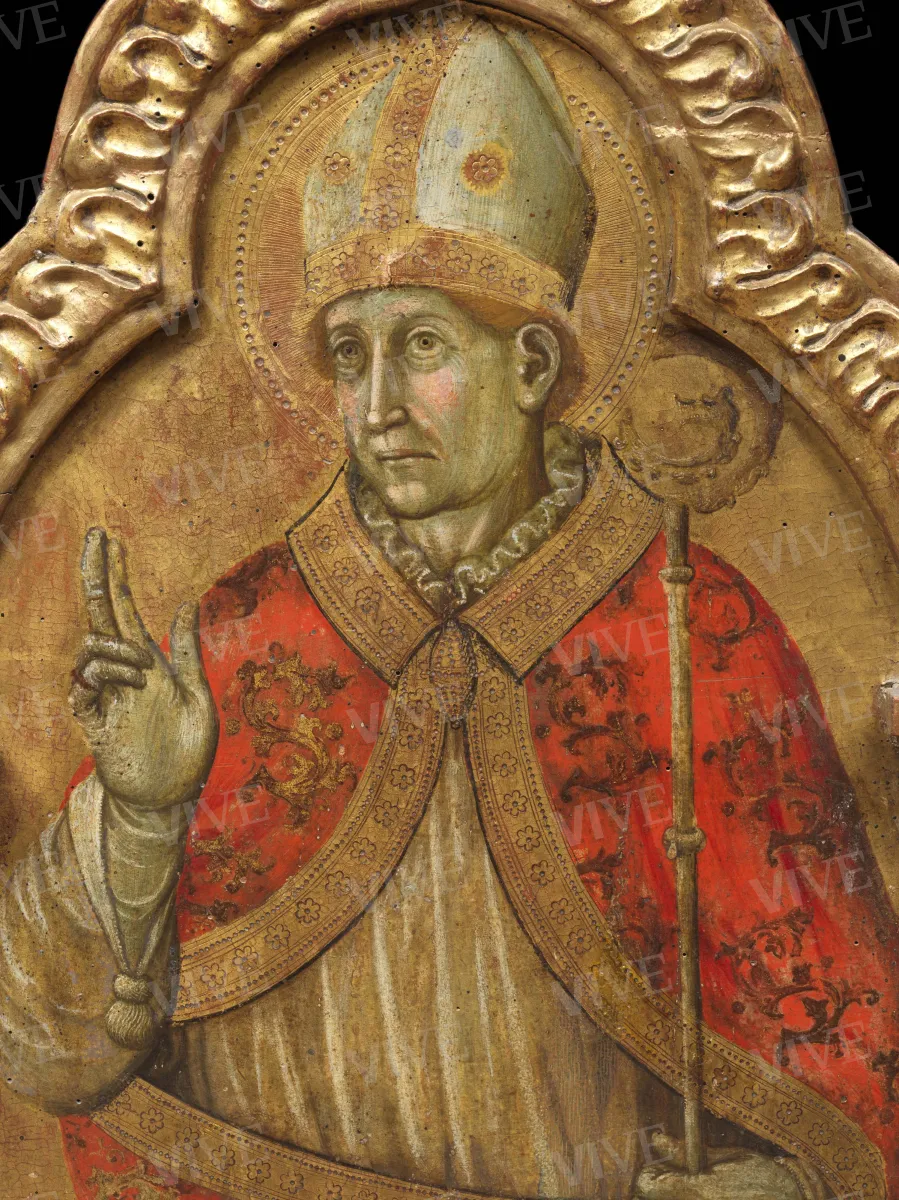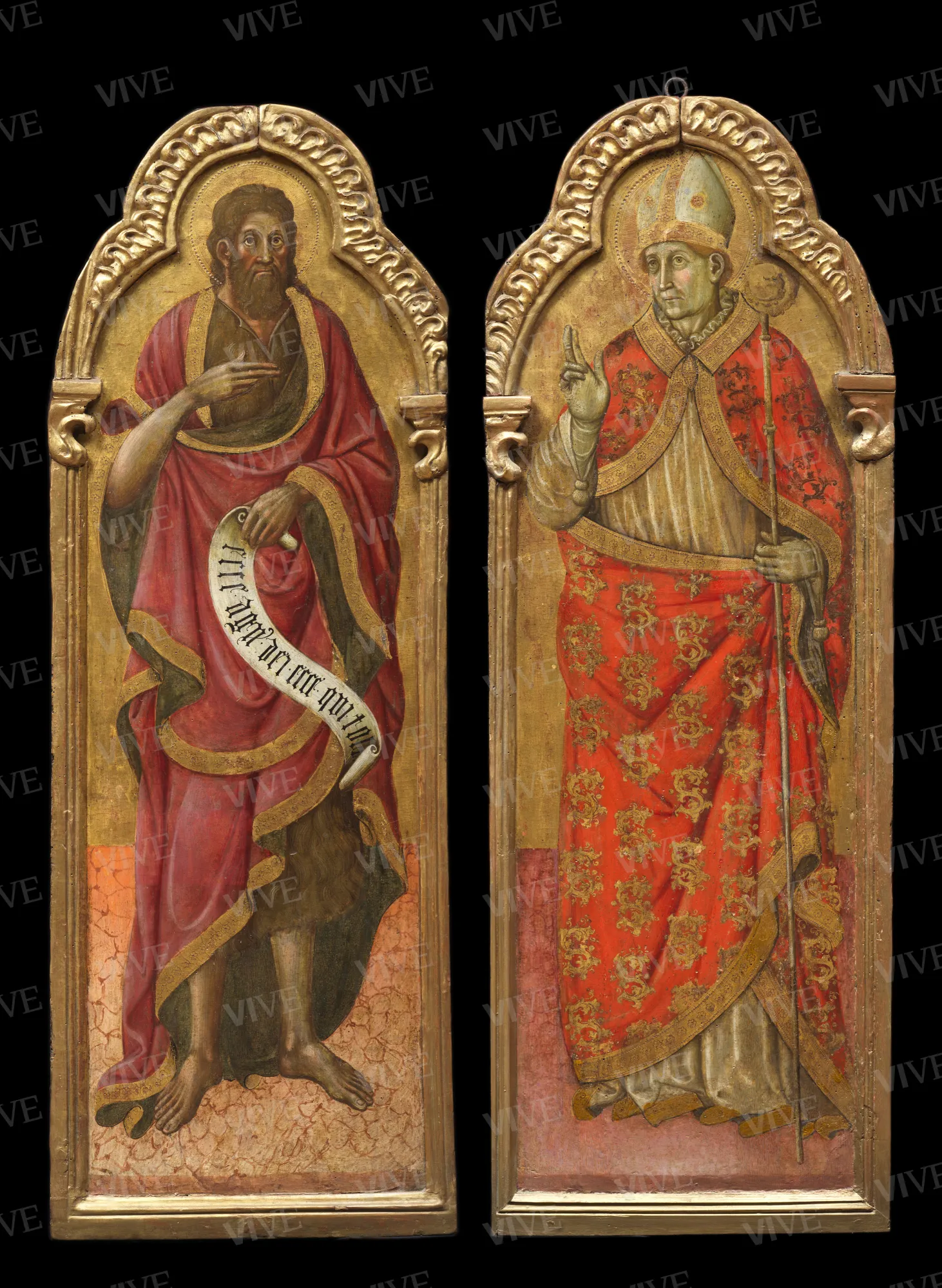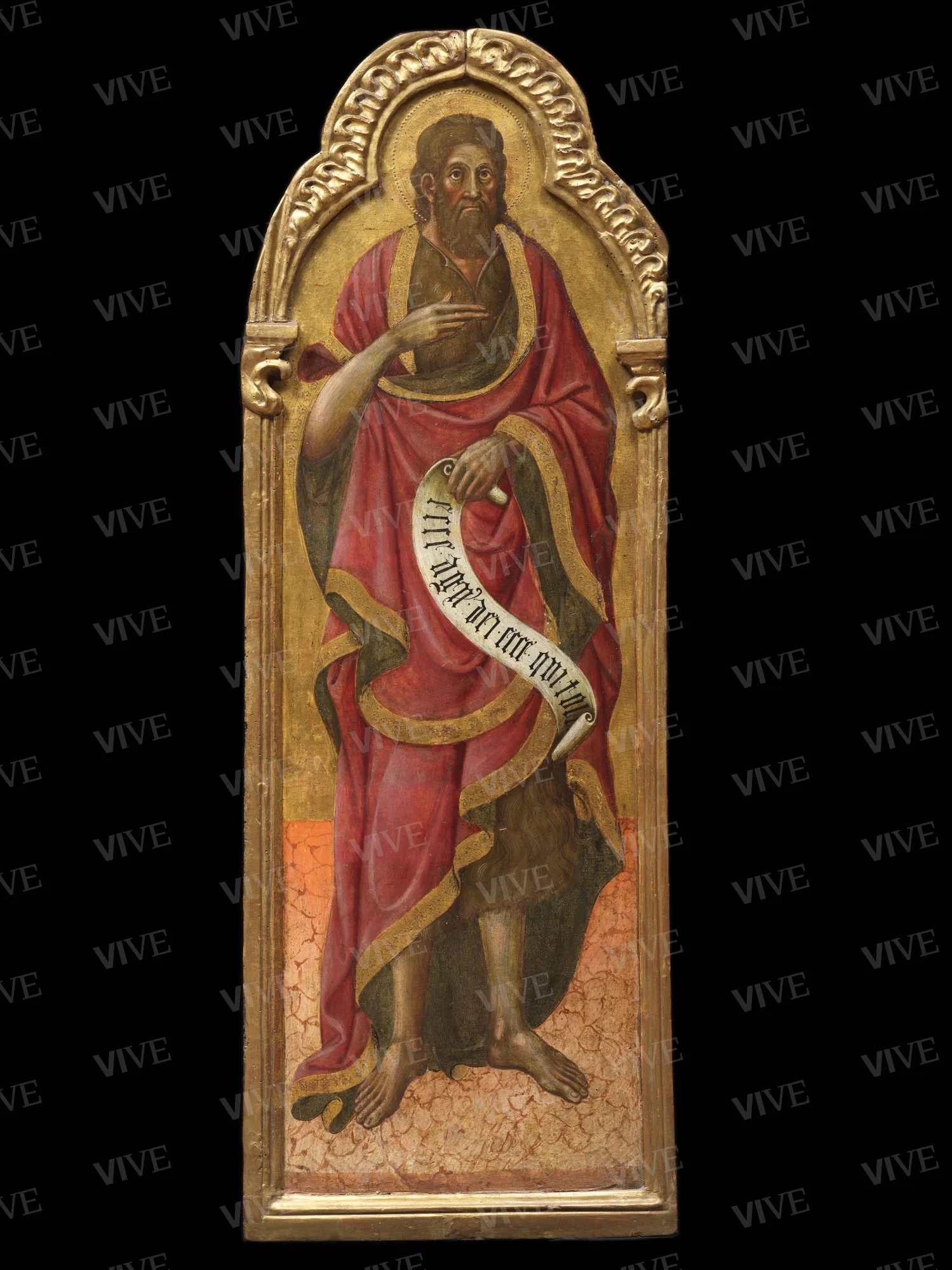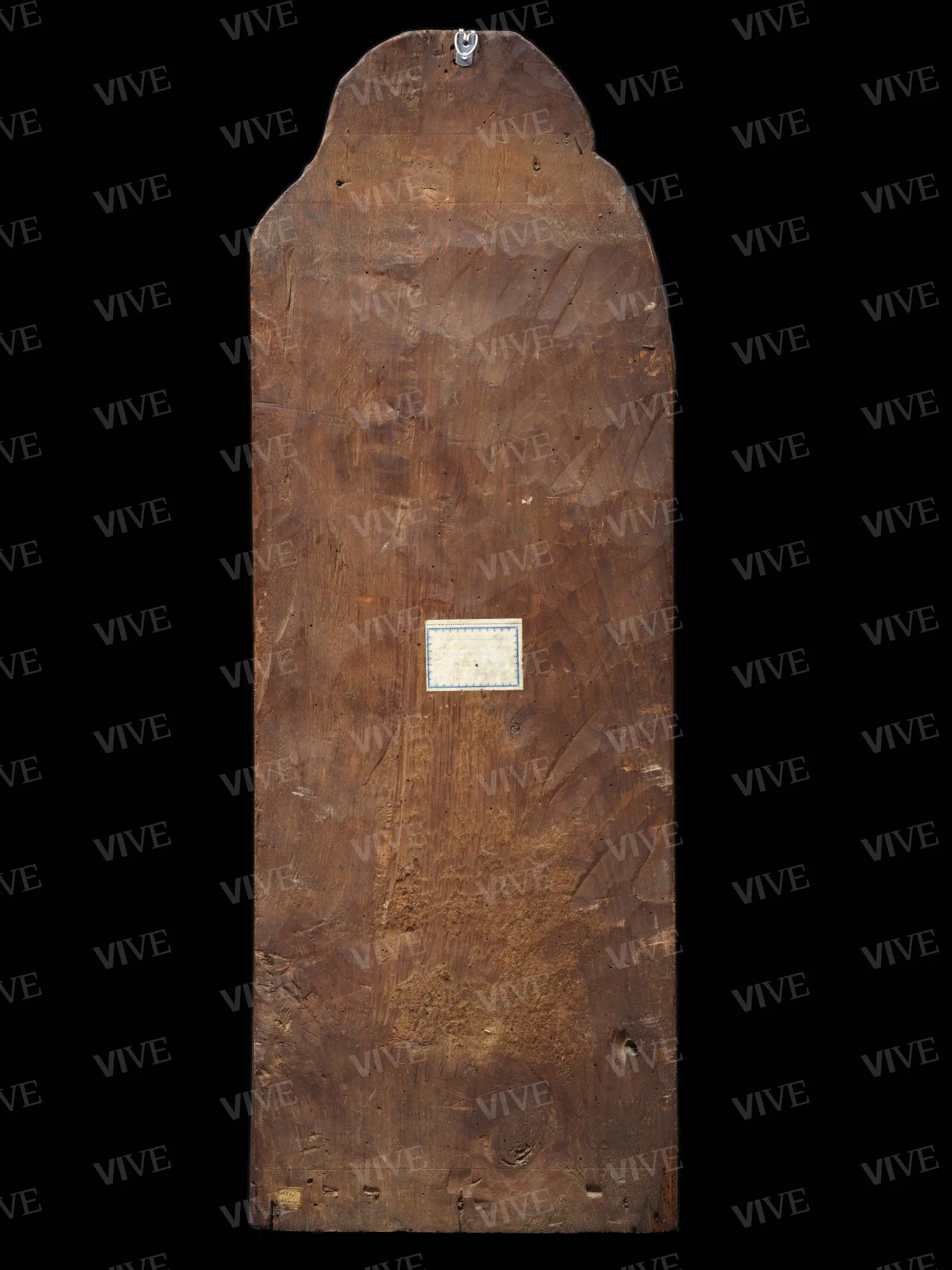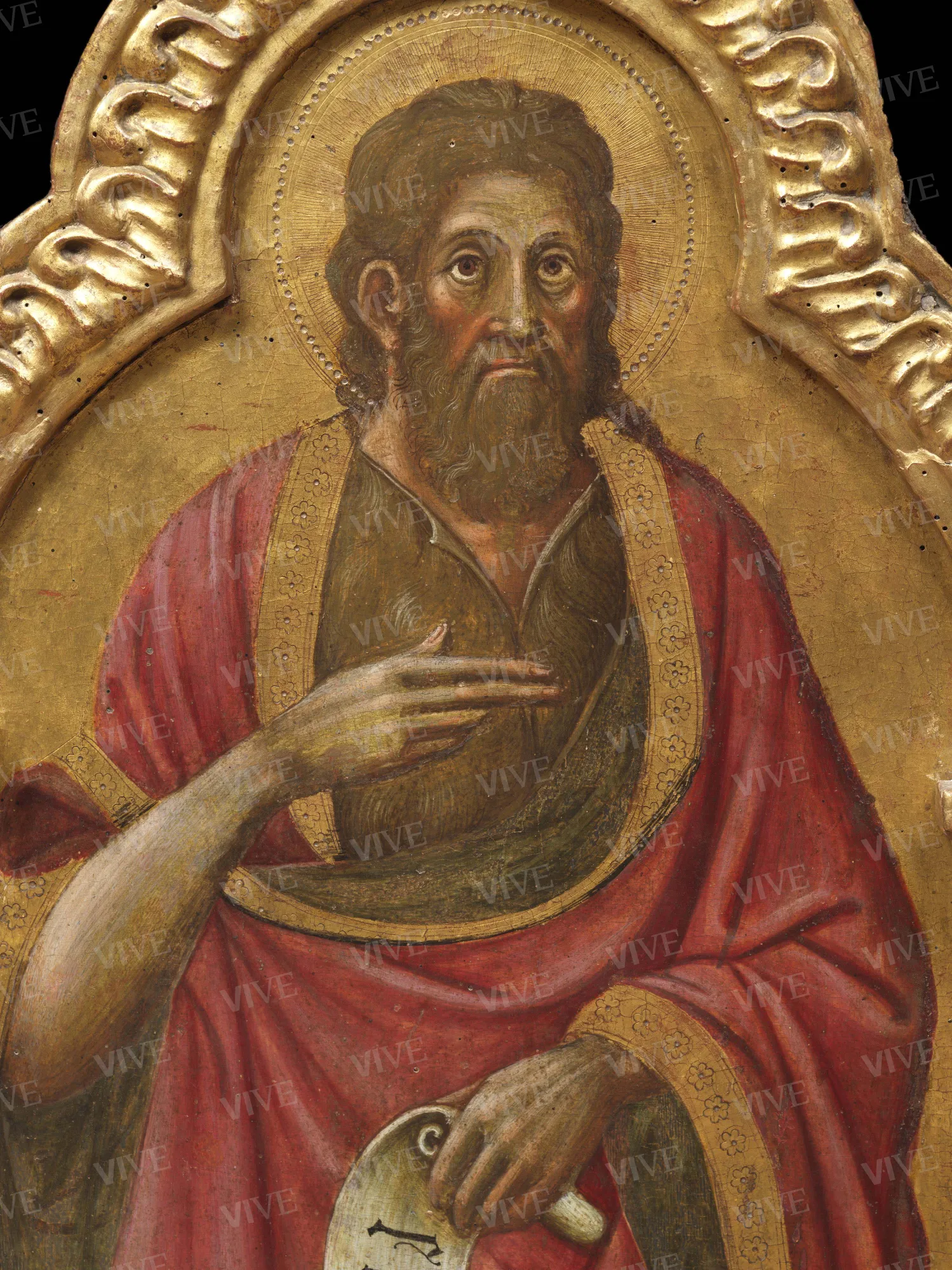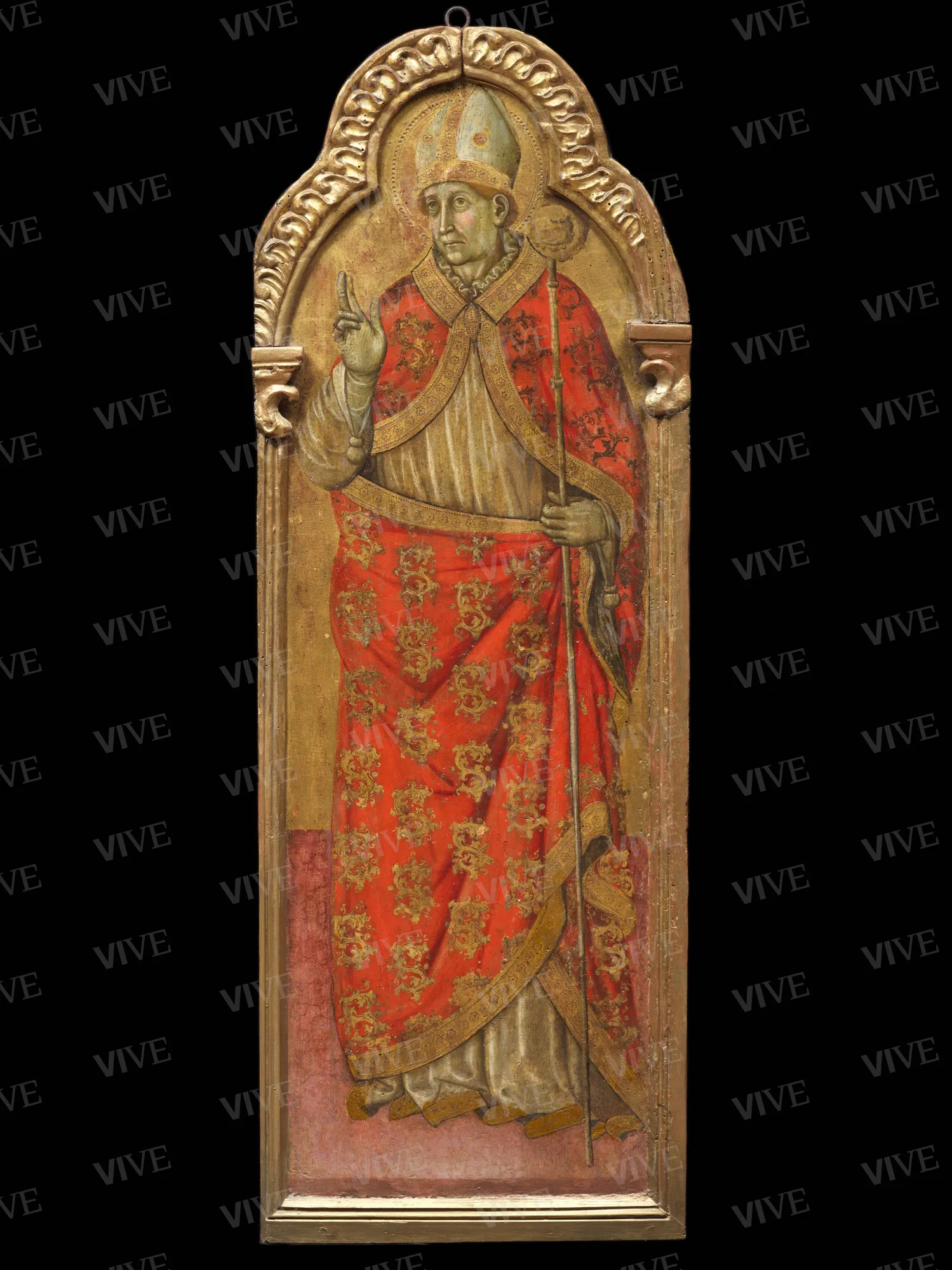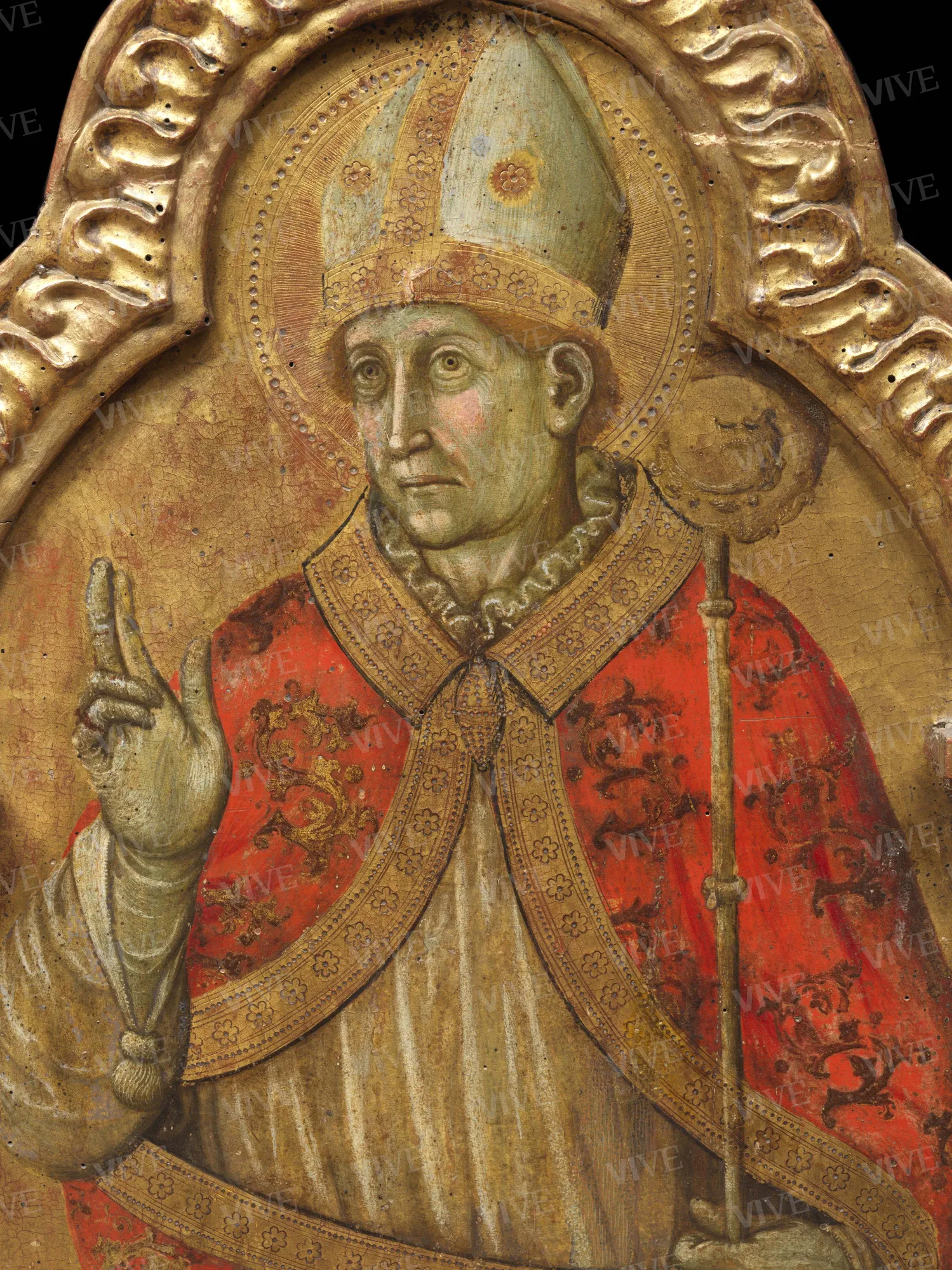Saint John the Baptist; Saint Septimius
Giovanni Antonio Bellinzoni da Pesaro C. 1440
Saint John the Baptist (a) and Saint Septimius (b) were part of a triptych, with the central element being a Madonna and Child that remained in the town of Jesi in the Marche region, originating from a church that no longer exists in the area. These works are considered to be evidence of the early activity, around 1440, of Giovanni Antonio Bellinzoni da Pesaro, one of the last masters of the late-Gothic style in the Marches region.
Saint John the Baptist (a) and Saint Septimius (b) were part of a triptych, with the central element being a Madonna and Child that remained in the town of Jesi in the Marche region, originating from a church that no longer exists in the area. These works are considered to be evidence of the early activity, around 1440, of Giovanni Antonio Bellinzoni da Pesaro, one of the last masters of the late-Gothic style in the Marches region.
Details of work
(b) Saint Septimius: height 119.50 cm; width 41.70 cm.
Catalog entry
The depictions of Saint John the Baptist (a) and Saint Septimius (b) are rendered on a support with a thickness of 2.5 cm. These paintings are bordered by frames measuring 1.5 cm, which have been superimposed. Despite regilding, these asymmetrical frames appear largely original and were designed to close the altarpiece at one end. Notably, two holes intended for junction pins between these panels and the central panel are present on the right side of Saint John the Baptist, located 33 cm and 82 cm from the bottom edge respectively, and on the left side of Saint Septimius, situated 30 cm and 80 cm from the bottom edge. Additionally, both panels feature two riveted nails on the back for frame attachment and a broken nail that secured a crossbar, positioned 7 cm high and roughly 10 cm from the upper edge.
Saint John the Baptist is depicted with a large pink cloak over a camel skin, and his right hand turned towards the central figures of the polyptych. Saint Septimius, martyr and protobishop of Jesi in the Marches region of Italy, whose cathedral bears his name, is shown in episcopal vestments, including miter, crosier, and cope, in the act of blessing, without any specific attribute. Both panels are well preserved: the gold leaf has maintained the original decoration, with thick internal lines in the halos and punched six-petalled flowers in the borders of the garments.
From the first print mention in the catalogue of paintings compiled by Antonino Santangelo (1947), it was indicated, based on Federico Zeri’s suggestion, that these two compartments belonged to the triptych that had at its center the Madonna and Child Enthroned, then displayed in the Museo Civico (now in the Museo Diocesano) of Jesi. This panel possesses all the necessary requisites: it is from the same period as Giovanni Antonio da Pesaro's work (see inv. 10225 for a biographical profile of the painter), is slightly larger than the two side panels (138 x 90 cm), and has a similar frame, differing only in its shape, which is round instead of trefoil. This connection has also allowed the identification of Settimio di Jesi in the general figure of the bishop in panel (b), confirmed by the repeated letter “S” throughout the cope. The history of the central panel, preserved locally, traces the triptych’s origins to the now demolished rural church of Sant’Amico in Gangalia, near modern Santa Maria del Colle. Considering the absence of Sant’Amico and the presence of the saint after whom the cathedral is named, it is possible that the triptych—originally more imposing due to a crown hinted at by the carpentry details of Palazzo Venezia and customs of the time—was intended for the cathedral itself and later moved to the country chapel.
Santangelo questioned the authorship of the two panels, attributing them to a “painter from the Marches, around 1460–1470,” but noted Zeri’s opinion favoring Bellinzoni. This view was affirmed by Zeri in 1948 and accepted by subsequent critics. Equally unanimous, following Berardi (1988), is a dating of the triptych to the late period of collaboration between Giovanni Antonio and his enigmatic father Giliolo around 1440. The large eyes of the figures are similar to those in the polyptych of Gabicce (Pesaro, Museo Civico), one of Bellinzoni’s oldest surviving works.
Matteo Mazzalupi
Entry published on 27 March 2025
State of conservation
Good.
Inscriptions
(a) On the scroll: “ecce agn(us) dei ecce qui toll(it peccata mundi)”;
(b) Repeated many times on the cope, in gold: “S(eptimius).”
Coats of arms, emblems, and marks
(a) On the back, in orange: “2115”;
on the back, in pencil: “58.”
(b) on the back, in orange: “2116”;
on the back, in pencil: “59.”
Provenance
Jesi (surrounding area), church of Sant’Amico (destroyed);
Rome, Tommaso Lupi;
Rome, Giovanni Armenise, until 1940;
donated by the latter to the Italian State, 1940.
References
Santangelo Antonino (a cura di), Museo di Palazzo Venezia. Catalogo. 1. Dipinti, Roma 1947, p. 38;
Zeri Federico, Giovanni Antonio da Pesaro, in «Proporzioni», II, 1948, pp. 164-167;
Berardi Paride, Giovanni Antonio Bellinzoni da Pesaro, Fano 1988, pp. 55-56;
Perlini, in Paoletti Gloriano, Perlini Antonella (a cura di), La Chiesa di Jesi, "tanta egregia e sublime arte", Jesi 2000, pp. 52-53;
Galeazzi Sergio, Perlini Antonella, Urieli Costantino, Guida al Museo Diocesano di Jesi, Jesi 2001, p. 20;
Minardi, in Costanzi Costanza (a cura di), Le Marche disperse. Repertorio d’arte dalle Marche al mondo, Cinisello Balsamo 2005, p. 128, n. 72;
Marchi Alessandro, La Crocifissione di Polverigi. Giovanni Antonio da Pesaro nella Marca d’Ancona, in De Marchi Andrea, Mazzalupi Matteo (a cura di), Pittori ad Ancona nel Quattrocento, Milano 2008, pp. 210-223.

